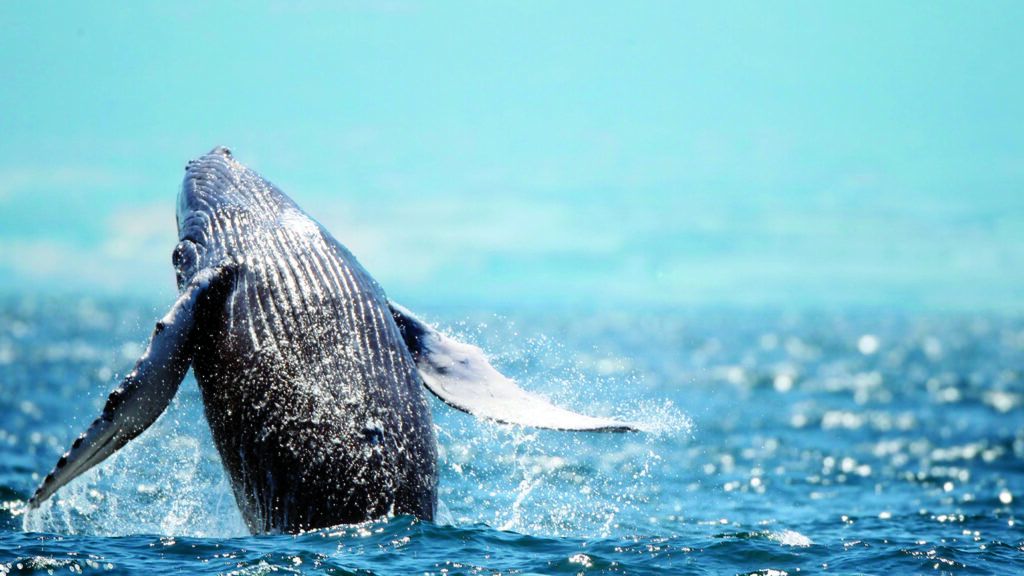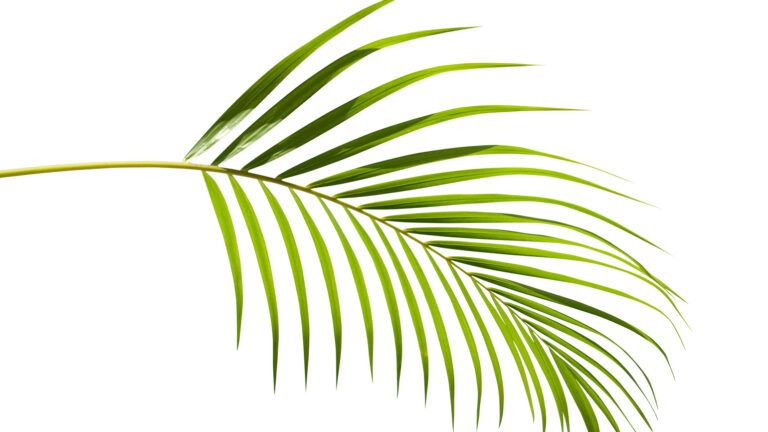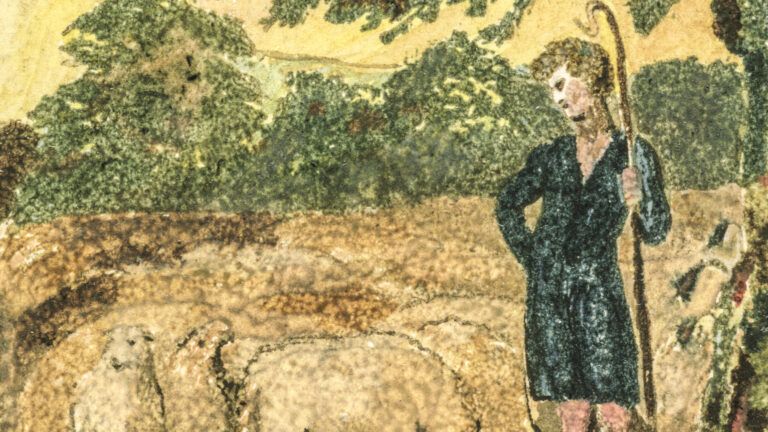My mom and I stood at the ship’s bow, braced against the chop. It was July, but a cold wind was ripping through Monterey Bay. Perfect weather, our tour guide assured us. My family was on vacation in California, and we were on a mission to see one thing—humpback whales. My mom, a pharmacist, studied marine biology in college. She’d been itching to go whale watching ever since. Now that we were on the boat, she could barely sit still. “I just love whales,” she said. “They’re so majestic.”
My mom isn’t alone in her love of those creatures. Whales have long fascinated mankind. And for good reason. They aren’t just majestic. They’re downright mysterious, from their massive size—blue whales stretch the length of nearly three school buses—to the haunting songs humpbacks use for communication. Then there’s their personality. Humpback whales, in particular, have been known to display humanlike emotions. Even compassion.
In fact, it was in Monterey Bay that, in May of 2012, researchers with the California Killer Whale Project witnessed something incredible. A pod of orcas—killer whales—attacked a mother gray whale and her calf.
The orcas killed the calf, but before they could eat it or attack the mother, a dozen or so humpback whales showed up. They made loud noises and slapped their tails against the water whenever an orca approached. For six and a half hours, the humpbacks kept up their vigil, protecting the gray.
Incredibly, it wasn’t an isolated incident. For decades, scientists have documented a puzzling phenomenon—humpback whales rescuing other sea creatures. It’s fitting in a way. After all, the most famous whale rescue comes out of the Old Testament: Jonah, the prophet, saved from drowning by a “big fish” that swallowed him and delivered him to shore three days later. Many theologians believe the story hints at Jesus’ death and resurrection. But could the tale indicate there’s more to whales than meets the eye?
Take what happened to Dr. Robert Pitman, a marine ecologist for NOAA Fisheries. On a 2009 research trip to the Antarctic Peninsula, Dr. Pitman and his team encountered two full-grown humpbacks harassing a pod of orcas. “The whole thing seemed a bit odd,” Dr. Pitman says, “because it didn’t seem like an attack.”
It was only after the team reviewed footage of the event that they noticed something else—a small Weddell seal tucked in between the humpbacks. Just out of the orcas’ reach. Had the humpbacks been protecting it? Or was the seal simply in the wrong place at the wrong time?
A couple days later, Dr. Pitman and his crew found out. They took another photo, this time of a humpback clutching a small seal to its belly. The whale was holding the seal out of the water and away from another group of hungry orcas. Again, the humpbacks had stepped in.
Intrigued, Dr. Pitman asked around. Other whale researchers had observed similar encounters. According to a study Dr. Pitman published in Marine Mammal Science, humpbacks intervened with orcas in 115 documented cases from 1951 to 2012. The humpbacks most often worked in pairs and protected a range of animals, from sea lions to sunfish.
The question remains, why do humpbacks show up in times of need, especially if there’s no apparent benefit to them? Are they simply protecting their territory, or is there a more benevolent purpose?
“When a human protects an imperiled individual of another species, we call it compassion,” Dr. Pitman says. “If a humpback whale does so, we call it instinct. But sometimes the distinction isn’t all that clear.”
Especially when that compassion extends to human beings. Nan Hauser, a whale biologist and the president of the Center for Cetacean Research and Conservation, experienced a humpback rescue firsthand. In October 2017, she was snorkeling and filming off the Cook Islands, in the Pacific Ocean. Suddenly, she came face-to-face with two adult humpbacks. One of them, a 50,000-pound male, made a beeline to her.
“He came right toward me,” Hauser recalls. “You have to push yourself to try to get away. But I couldn’t. This whale was relentless. My hand was up against the whale, and he was pushing me. The next thing I knew, he was nudging me and I was on his head.”
Over the next 10 minutes, Hauser struggled to remain calm. “I knew I was going to die,” she says. “He kept trying to put me under his pectoral fin, but I couldn’t go under because I’d drown. I had on just a mask and snorkel. Then he lifted me up, clear out of the water. I looked over and saw the other whale, a female. She was madly tail slapping.”
Then Hauser noticed a third shape in the water. At first, she thought it was another whale. But its tail wasn’t going up and down, and it was swimming from side to side, headed straight for Hauser. It was a 15-foot tiger shark. The whales had been keeping Hauser away from it.
The incident left its mark. Hauser couldn’t help but wonder if the whale had been conscious of her. A year and 15 days after the rescue, something incredible happened.
While out with another research team, Hauser spotted a humpback with markings on its tail similar to those on the one who had rescued her. Whale tail patterns are unique, like human fingerprints. This humpback swam right up to the side of the boat.
“He picked up his head and stared at me,” Hauser said. “He didn’t pay any attention to anyone else.”
She pulled up a photo on her phone of the male whale that had rescued her and compared it to this whale. The tail markings were identical. “We can present [these cases] professionally and scientifically,” Hauser says, “but at the same time, there’s a spiritual aspect to it.”
That’s something I experienced in Monterey Bay when our tour boat came to a stop. The captain had spotted something. Yes! By the bow, we saw two submerged humpbacks, a mother and her calf. My mom and I watched, mesmerized, as the calf—already some three tons—jumped out of the water, returning with a giant splash. We visited with the whales for an hour. But months later, I couldn’t stop thinking about them. Hauser, who’s been studying whales for nearly 30 years, feels the same way.
“They’re sentient beings,” she says. “When you look in their eyes, you can see they know something we don’t know. And it’s that deep wisdom and knowledge we can only hope to one day understand.”




